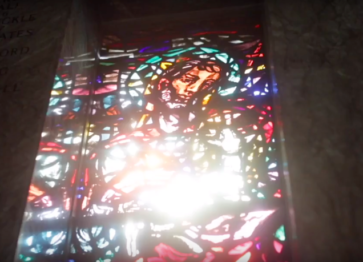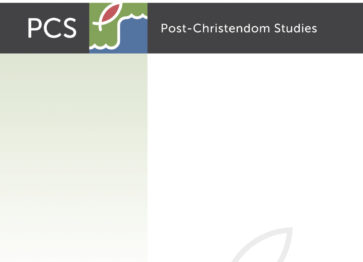Christianization of the Global North and the development of the churches often served the political and economic interests of the rulers. In Canada, the Roman Catholic church gained its hegemony through French colonization, whereas the Protestant churches were founded in the context of the English settlements. Finland provides an example of a state church system. The different Christian denominations – Catholic, Eastern Orthodox, and Lutheran – were introduced to the Finns according to the political interests of the rulers. In my last blog, I will give an overview of the historical developments and impact of Lutheranism in Finland.
Finland adopted Lutheranism as a result of the Reformation. As the majority of modern Finland was under Swedish rule until the year 1809, the developments in the political and cultural life of Sweden impacted Finland as well. The Reformation of Finland was driven by the Swedish king, Gustav Vasa, and his state-building program but also by the spread of Lutheran influence from other parts of Europe.[1] The Reformation represented a period of nearly 200 years from 1520–1690, from the beginning of King Vasa’s rule to the time when Sweden had become a monarchical kingdom and the church a state church led by the king. Sweden was transformed by both religious reform[2] and the growth of state power. These two different points were tied together since greater control over the church enabled the king to form a stronger state and fight against the economic and political power of the Catholic church and the German Hanseatic League.[3]
Reformation impacted Finnish society in many ways. As everyone was expected to read and understand scriptures in their own language, the Finnish literary language was created, and the Bible and other religious material were translated into Finnish. Also, the Lutheran ideology promoted values that were carried on in Finnish society. For instance, honesty, being a good citizen, and the concept of having a calling and vocation to work in God’s world has provided the moral background for many Finnish professionals. The role Lutheranism took in promoting gender equality has also been studied. The new idea of individualism as part of Reformation, women’s freedom to “choose for themselves their calling…in the service of God” has been seen as a foundation for later developments of social democracy and women’s rights in the Nordic countries.[4]
The Lutheran state church had a monopoly status in Finland until 1870. During that time, its dominance gradually weakened, and revival movements within the Lutheran church developed in the 18th and 19th centuries. After the Freedom of Religion Act in 1922, revival movements outside the Lutheran church (the Free Church, Baptists, Methodists, and Pentecostals) were permitted, these movements emphasized “individualism, civil rights, and freedom of speech and channeled Western cultural influences.”[5]
In the Global North today, religion is not dictated by the rulers but chosen by the individuals. This provides the context for the weakening of Christendom, the state-sponsored policies, and the civic values that support the church. But at the same time, they are conducive to faith. Why? Because genuine faith is not prompted by force but rather by the work of the Spirit. But at the same time, “how can they believe in the one of whom they have not heard?” (Rom 10:14, New International Version). What would be the revival here today? What is in the gospel that needs to be preached today? Perhaps it could be a message proclaimed by someone like John Wesley who would seek to renew the lukewarm church or Jonathan Edwards reminding us that there is God to whom we are accountable and that perceiving a glimpse of His holiness and beauty would be all we desire.[6] [7]
[1] Pirjo Markkola, “The Long History of Lutheranism in Scandinavia. From State Religion to the People’s Church”. Perichoresis 13.2 (2015), 3-15.
[2] Gustav Vasa embraced Lutheran reform slowly. Although he had no interest in questions of theology, he favored the less complex form of Christianity where “the pure Word of God” was proclaimed. James L. Larson, Reforming the North. The Kingdoms and Churches of Scandinavia, 1520-1545. New York: Cambridge University Press, 2010, 499.
[3] Mikael Agricola, “the father of Finnish language” was the driving force behind the Reformation in Finland. More information about King Vasa’s rule and the time of Reformation in Sweden and Finland is available in a book by Jason Lavery: Reforming Finland. The Diocese of Turku in the Age of Gustav Vasa, 1523-1560. Leiden; Boston: Brill, 2018.
[4] Robert H. Nelson, “Lutheranism and the Equality of Women in the Nordic Countries.” In On the Legacy of Lutheranism in Finland. Societal perspectives, edited by Kaius Sinnemaki et al., 193-220. Studia Fennica Historica. Helsinki, Finland: SKS, 2019. As a result of revival movements and political developments, Finland was the first European country to introduce universal women’s suffrage in 1906.
[5] Esa Mangeloja, “Religious Revival Movements and the Development of the Twentieth-century Welfare-state in Finland.” In On the Legacy of Lutheranism in Finland. Societal perspectives, edited by Kaius Sinnemaki et al., 220–236. Studia Fennica Historica. Helsinki, Finland: SKS, 2019. https://helda.helsinki.fi/bitstream/handle/10138/312271/on_the_legacy_of_lutheranism_in_finland.pdf?sequence=1.
[6] See for example, Dane C. Ortlund. Edwards on the Christian Life. Alive to the Beauty of God. Wheaton, IL: Crossway, 2014.
[7] Source for the front–page image: “Kustaa Vaasa ja Agricola,” Albert Gebhart/A. Edelfelt, Otava, Oy Tilgmann AB, Turun Museokeskus, Finland. In the picture, the Finnish reformer, Mikael Agricola presents the Finnish translation of the New Testament to the Swedish king, Gustav Vasa.




